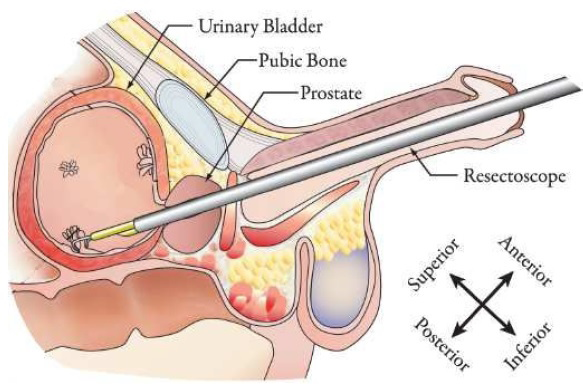TURBT

Transurethral resection of the bladder (TURB) Transurethral resection of the bladder (TURB) is the initial and critical step in the management of bladder tumours. The aim of the procedure is to establish the histologic diagnosis, determine the tumour stage and grade, and achieve complete removal of papillary,non–muscle-invasive tumours. Although TURB is a frequently performed procedure, its results are limited by the high recurrence rate and by the risk of tumour understaging. The major prerequisite for optimal outcomes is a systematically and meticulously performed procedure by a welltrained urologist. Smaller tumours can be resected en bloc; tumours >1 cm should be resected separately in fractions. Deep resection, including the detrusor muscle, is essential for correct staging. The biopsy should be taken from all areas suggestive of carcinoma in situ (CIS), and biopsies from normal-looking mucosa are recommended only in patients with positive cytology or non-papillary tumours. TURB should be performed with modern equipment, including new telescopes and video systems. Moreover, urologists should be aware of promising innovations, including new imaging techniques, and their possible benefits.
